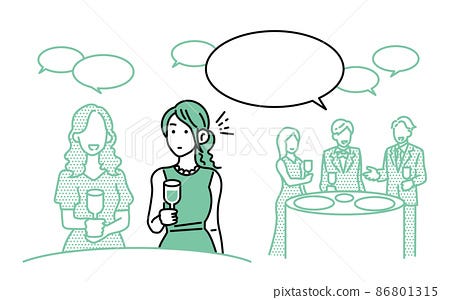TLC #025: The Cocktail Party Effect - How To Focus Learners’ Selective Attention On What Really Matters
In this edition of the Learning Chronicle newsletter, we explore the concept of the cocktail party effect; what it is, how it works, and its implication for teaching and learning.
Hi,
Here is your weekly dose of “The Learning Chronicle Newsletter” weekly curated content that leverages the learning sciences, data, and evidence-based research to help K–12 educators, stakeholders, and learners optimize for how learning happens while preparing learners for the future of work.
Welcome to all new subscribers. I am Omotayo Olorunfemi; a learning and development specialist. Check out the archive for previous editions using the first link above. Welcome!!! Once again.
One Learning Quote
“The secret to getting ahead is getting started. The secret to getting started is breaking your complex, overwhelming tasks into small, manageable tasks and then starting on the first one.” - Mark Twain
One Article
The cocktail party effect is a term used to describe how the brain can selectively focus on a single conversation in a noisy environment, such as a cocktail party, while filtering out other conversations and background noise.
The cocktail party effect is when you can hear someone talking to you even if many other people are talking around you.
It's like being at a party where lots of people are chatting, and you can still hear the person you're talking to even though there's a lot of noise around you. It's like magic ears!
The “cocktail party effect” is a term coined by British scientist Colin Cherry in the 1950s.
It refers to the ability of the brain to selectively focus on a specific sound or conversation while filtering out other sounds and background noise.
Cherry's original experiments involved playing two different messages to a listener's ears simultaneously and asking them to repeat back one of the messages. He found that people were able to successfully focus on one message and ignore the other, even when both messages were presented at the same volume level.
So, how does the brain do this?
The process begins in the auditory system, where sound waves are converted into electrical signals that are sent to the brain. Once these signals reach the brain, they are processed by a network of neurons responsible for selective attention. This network is able to enhance the processing of relevant auditory information while suppressing irrelevant information.
One way the brain does this is by using spatial cues to determine where a sound is coming from. For example, if a teacher is speaking directly in front of a student, the student's brain can use the difference in arrival time and loudness of the sound in each ear to determine the direction of the sound. This information is then used to suppress competing sounds coming from other directions and focus on the teacher's voice.
Another way the brain filters out irrelevant sounds is by using top-down processing. This involves using prior knowledge and expectations to selectively attend to certain sounds. For example, if a student knows that they are in a classroom and that the teacher is speaking, their brain can use this information to selectively attend to the teacher's voice and filter out other sounds.
Implications for Learning
Understanding the cocktail party effect can be useful for educators as they strive to create a classroom environment that is conducive to learning.
In a busy classroom, it can be difficult for students to focus on the teacher's voice with all the other noise around them. The sound of chairs scraping, students whispering, and even the hum of the air conditioning unit can all distract from the important lesson being taught.
One of the most effective ways to do this is by enhancing the signal-to-noise ratio, which refers to the ratio of the teacher's voice to background noise. This can be achieved by using a microphone, minimizing background noise, and positioning students closer to the teacher. By doing so, students can more easily focus on the teacher's voice and absorb information more effectively.
Additionally, students can use the cocktail party effect to selectively attend lectures and instructions, helping them better understand and retain the material.
Another strategy for addressing the cocktail party effect in the classroom is to create a quiet, focused learning environment. This can be accomplished by minimizing unnecessary noise, such as by turning off background music or asking students to work quietly. It may also be helpful to provide students with strategies for improving their selective attention skills, such as practising mindfulness or using noise-cancelling headphones.
REFERENCE
Cherry, E. C. (1953). Some experiments on the recognition of speech, with one and with two ears. The Journal of the Acoustical Society of America, 25(5), 975-979.
Mesgarani, N., David, S. V., Fritz, J. B., & Shamma, S. A. (2014). Mechanisms of noise robust representation of speech in primary auditory cortex. Proceedings of the National Academy of Sciences, 111(29), 10329-10334.
Shield, B. M., & Dockrell, J. E. (2008). The effects of noise on children at school: A review. Journal of Building Acoustics, 15(2), 97-106
One Video
This four-minute-plus video below, posted by Brainfacts.org on YouTube, aptly sums up the science behind the cocktail party effect.
The Science Behind the Cocktail Party Effect
One Learning Question
Does this habit still serve me or am I blindly following an old routine?
What We Are Reading
A.J. Juliani on The Three Emotions That Drive Deeper Learning
MIT News on Festival of Learning 2023 underscores the importance of well-designed learning environments
The Learning Scientists Blog on Introduction to ChatGPT
P.S: We will be going on a two weeks break. Our next issue will be on the 21st of April, 2023.
That’s a wrap for this week.
What would you want me to write about? Tell me in the comment
Ensure that you keep learning and subscribe to this newsletter by clicking the button below:



